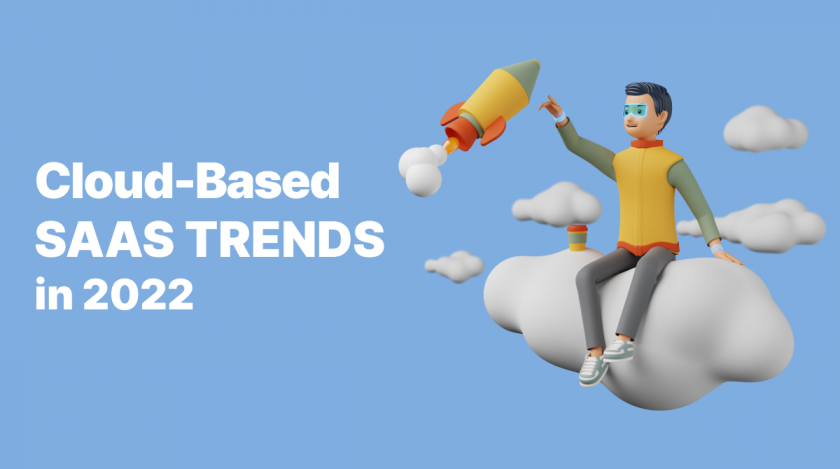Cloud SaaS Trends in 2022
Before reviewing what are the SaaS trends in 2022, let’s distinguish what the cloud is. The cloud, in computing, is a metaphor for an Internet-based service or platform. SaaS offers the same capabilities as a physical computer. It is a model for enabling ubiquitous, on-demand network access to a shared pool of configurable computing resources (e.g., processor time, storage space, and network bandwidth). It can be rapidly conducted and released with minimal management effort or service provider interaction. Cloud storage for business is more affordable than ever.
Anyone can use the tools to create new applications with the supercomputer’s cognitive technology capabilities. Software as a Service (SaaS) is a software licensing and delivery model in which software is permitted on a subscription basis and is centrally hosted. Cloud computing is an advanced topic; however, once you understand the basic principles behind it, you can begin to explore the wonderful world of SaaS. What does it spell out to be in the cloud? How does cloud computing work? And what are the main SaaS trends in 2022, of course?
What Is Software As A Service (SaaS)?

SaaS is a business model that allows and shows you how to migrate to SaaS from a traditional desktop licensing/upgrade model to subscriptions. It also offers greater control over application deployment, software updates, and shorter sales cycle times. It is a software licensing and delivery plan on a subscription and centrally hosted. Therefore, SaaS cloud migrating to a SaaS business model is the best way for most vertical SaaS companies to grow revenue faster. It is an excellent way to bolster your product and gain a competitive advantage. That is the main SaaS trend in 2022 to follow.
Cloud Growth: SaaS vs. Other Cloud Services
Worldwide customer expenditure on public cloud services is predicted to grow 23.1% in 2021 to a total of $332.3 billion, up from $270 billion in 2020. Despite macroeconomic headwinds, SaaS products are experiencing tremendous growth and will be the largest market segment in 2021. Spending on cloud services worldwide will multiply during the next two years. Public cloud services are still growing and are popular with SaaS businesses. Public cloud services experienced 23% growth in the last year. It is projected that there will be an additional 20% growth over the next several years. And it’s not just for big companies anymore; small businesses are jumping on the bandwagon, too. SaaS is up 23.1% worldwide over the next three years.
SaaS is the most popular cloud-based business model and is forecast to reach $122.6 billion in 2021. IaaS and DaaS will see the highest growth in 2021, 38.5% and 67.7%, respectively, as CIOs face pressure to scale infrastructure that supports complex moving workloads to the cloud and accommodate a hybrid workforce. Small business owners and growth companies can use SaaS. Multi-tenant architecture and the cloud in ways that allow them to quickly expand their servers to support higher traffic while also reducing costs. Moving from on premise to SaaS lets you see how single-tenant architecture and multi-tenant technologies can help your business.
What Are The Main Business Benefits Of Cloud/SaaS-Based Services?
Software as a Service is not just a way to meet your IT needs. It’s also the way to deliver IT services. SaaS as a business model within a B2B context has many advantages. You’re hard-pressed not to notice that SaaS is suitable for any business.
- When you use SaaS, it offers customers a better customer experience. They do not have to install and update products on their own. You take care of it, which means a better customer experience and, as a result, higher sales potential.
- SaaS products do away with the need for customizing for the client. They choose from several standard options.
- Since there is no need to install and maintain hardware, SaaS can save on hardware and related maintenance costs. It also reduces sales cycles and increases revenue per customer.
- SaaS businesses will be more predictable and deliver less volatile revenue than traditional businesses. An upfront product expense is usually built up in the monthly costs, making it easier to predict your service revenue.
- Using a managed SaaS hosting provider such as Cloudways, you can run multiple SaaS applications through a single cloud platform, enabling top-notch performance, multi-layered protection, and automatic scaling. You can either get started for free or use Cloudways’ Promo Code to host your SaaS applications at discounted rates, Courtesy of Cloudways’ discount on all their plans.
SaaS Acquisitions And IPOs
The 2020 calendar year saw many technology companies go public, underscoring the trend toward remote work and eCommerce. US companies raised a record $435 billion in stock sales in 2020, and the vast majority of those new listings defined themselves as technology companies. Xilinx and Slack have acquired 20+ companies, respectively, since the beginning of 2018. There were more tech deals in less time than we could ever imagine amid the coronavirus.
From revenue projections to enterprise solutions, SaaS growth doesn’t stop. SaaS acquisitions feel like they’re happening daily, as more prominent companies look for the next big thing. Other initiatives are also on the rise with the stability of the economy and investor confidence in scalable cloud solutions. The number of businesses specializing in SaaS that IPOed in 2020 exceeded all other industries combined. And since then, SaaS use has increased 125%, with multiple companies going public in 2021. SaaS trends in 2022 are the future of business. With increased adoption, you don’t want to miss out on these stocks that are great additions to your portfolio.
The Top 10 SaaS Trends In 2022
The Growing Need For API Connections
A formable business is an agile business building microservices in a multi-tenant architecture that uses standards to meet the changing needs of its customers. Digital transformation and microservices are creating this need for composability. By standardizing and automating code testing and securing for API developers, you can spend less time on routine tasks and focus more on adding value with your new APIs
Micro SaaS
Many people will recognize the acronym SaaS (Software as a Service) right away. They may also know that SaaS is a model where an application is leased to customers over the Internet. Savvy startups and smaller companies have created micro SaaS solutions due to their simplicity, agility, and flexibility. SaaS technology stack allows for specific SaaS businesses of any size with low overhead, small teams, and dedicated user bases. Due to seamless upgrades, these businesses have less effort, resources, and time to build. They also focus on profits and sustainability.
Product led growth
Market strategies have created a tremendous business for customers. It lowers their customer acquisition costs, makes multi-tenant architecture possible, allows them to scale their application quickly, and enables them to reduce their overall cost of ownership.
Vertical SaaS companies SaaS Trends in 2022
Niche-specific SaaS products are the next big vertical. These niche-specific SaaS products with revenue are close to $141 billion by 2022. The single-tenant architecture, SaaS technology stack, and SaaS development process for these products are extensive and customized for specific verticals.
A customer-centric mentality
This secret has contributed to the growth OF 12% over the last five-year period, which has grown customers, increased their lifetime value, enhanced loyalty, and driven change.
Increased the uptake and use of AI
It helped the business automate repetitive tasks, optimize their businesses, increase productivity, and support human capabilities.
Boosted remote working
SaaS products are becoming the new standard for technology startups to develop and deploy software and boost remote working.
SaaS products are becoming low/no-code apps.
They use development toolkits with plug & play interfaces and drag-n-drop interfaces, making building SaaS apps open to all. They use a multi-tenant architecture. An example is Google Apps.
More personalization and speed
SaaS products are becoming quicker, more personal, more secure, and easier to manage than ever before.
Bridging the gap of SaaS trends in 2022
Multiple developers are working on the SaaS technology stack to increase the number of tools built to cope with demand changes.
Cloud-based SaaS has taken over the Internet and software development. The service-based cloud application industry will be worth $143.7 billion by 2022, with SaaS dominating the cloud computing market. SaaS trends in 2022 are predicted to grow steadily. If there is a future of SaaS products and SaaS cloud migration, this growth is attainable. Thanks to the development of cloud computing, the SaaS market is more significant than it’s ever been. When switching to a SaaS model, plan it out thoroughly, outline your architecture, and choose a suitable migration model.















